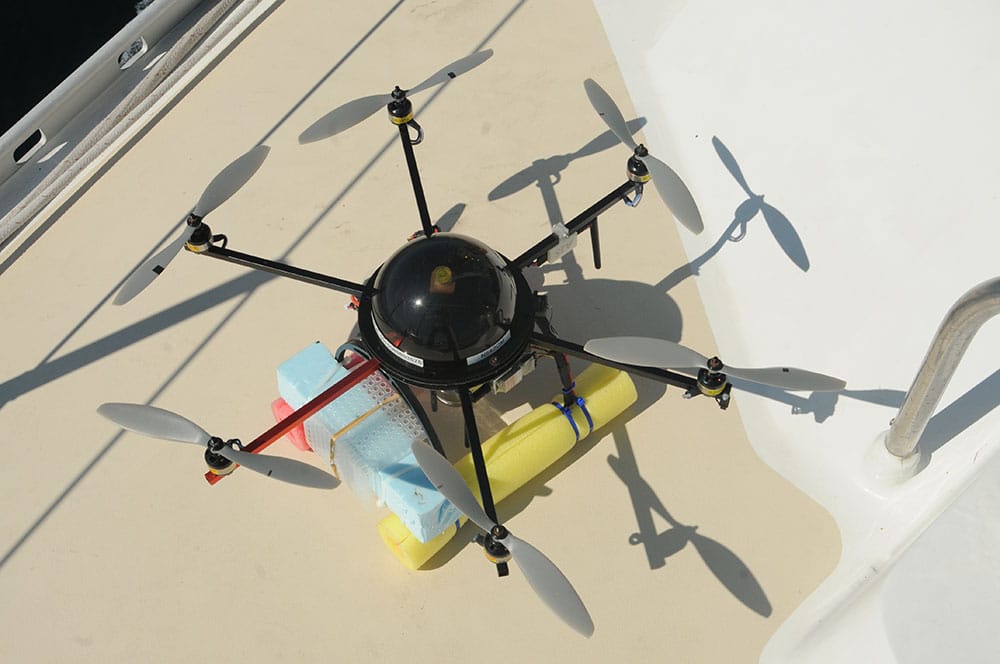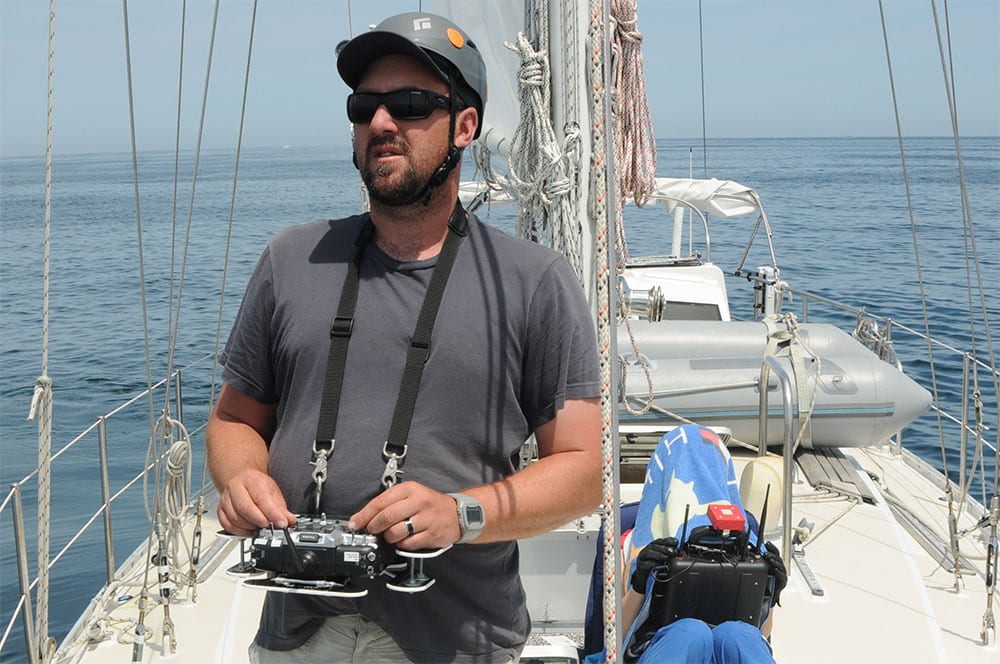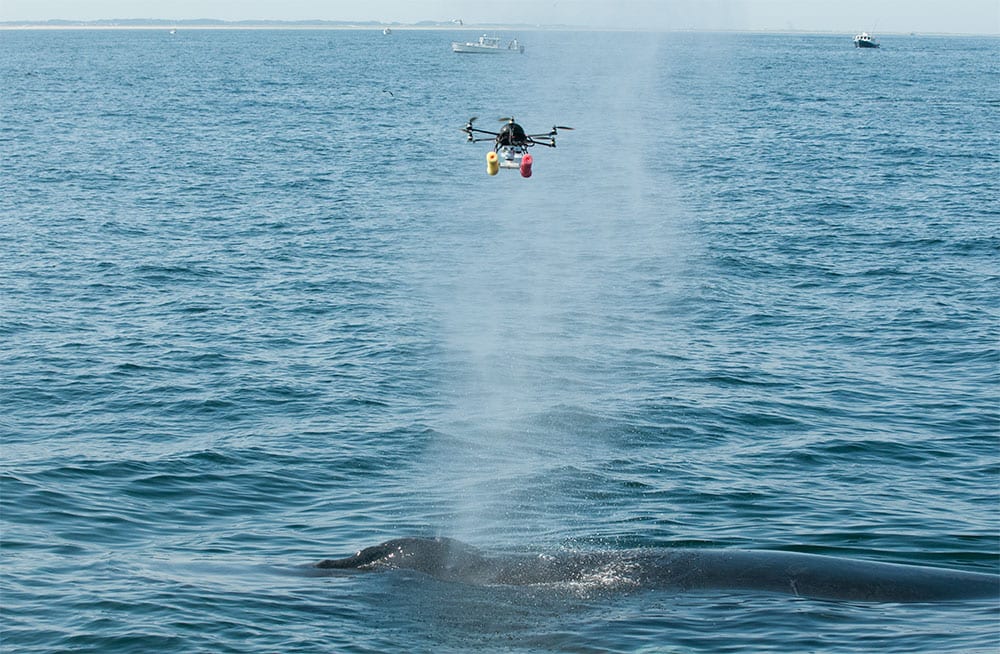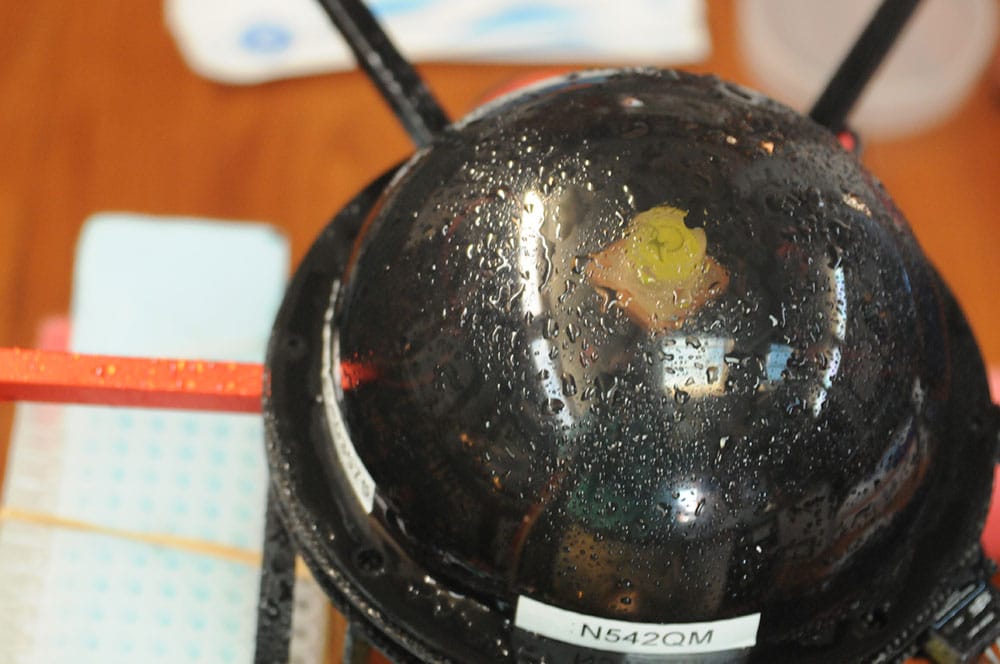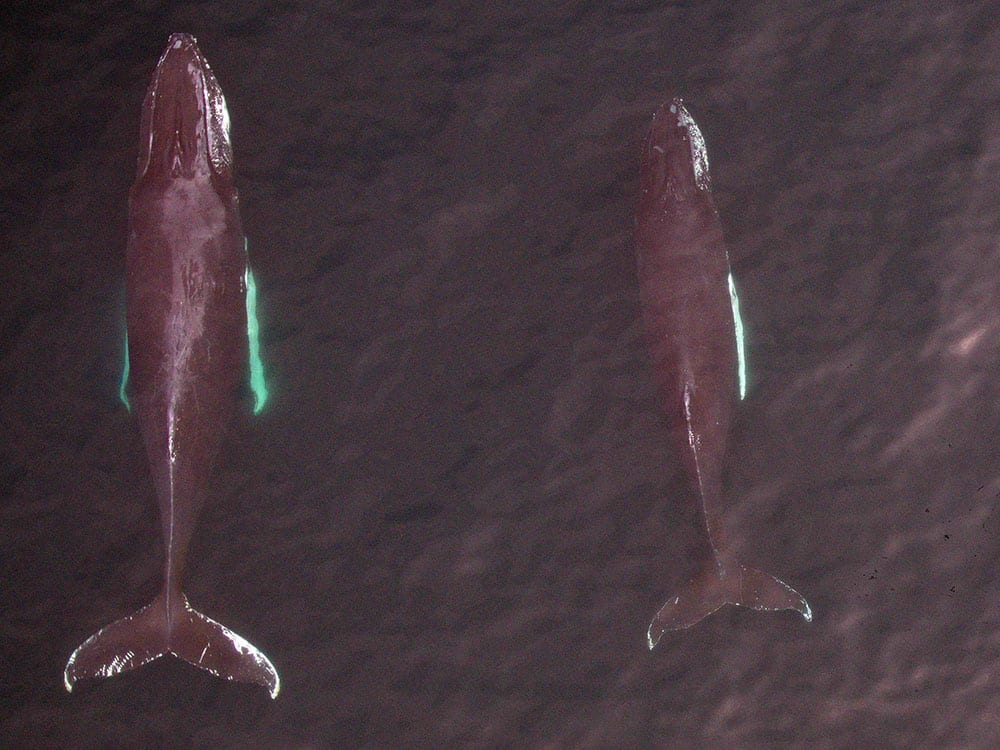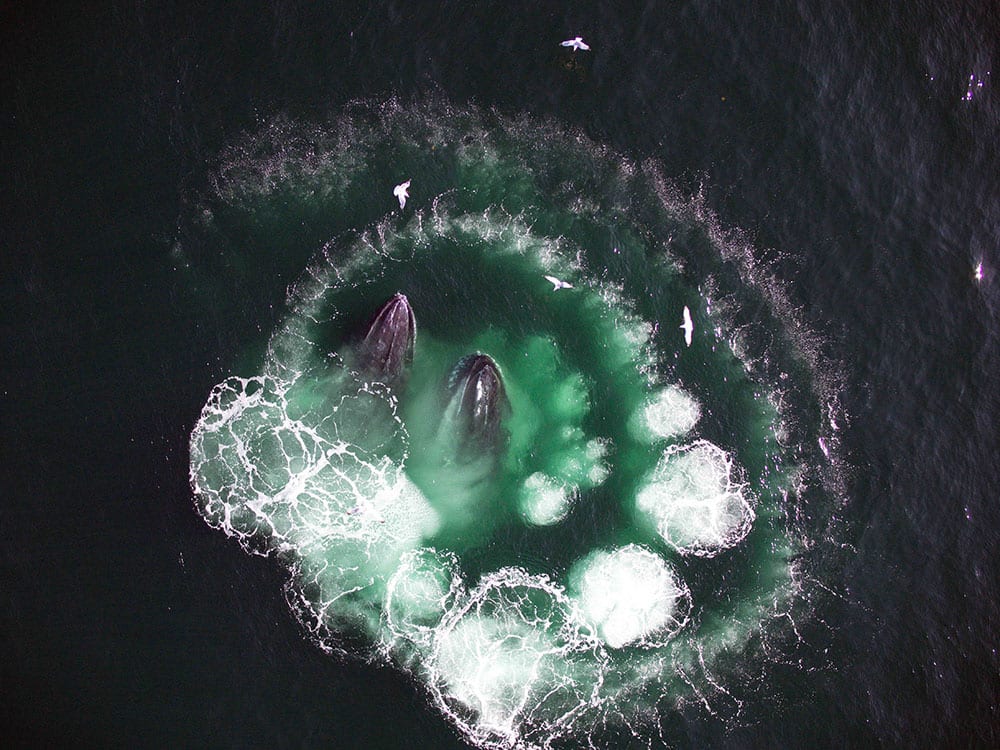Whale Research Takes Flight
July 31, 2015
A research team has successfully demonstrated a new non-invasive tool to obtain hard-to-get health measurements of large endangered whales in the wild: Using a small remote-controlled hexacopter, scientists for the first time collected both breath samples from the whales’ spouts combined with aerial photos of their body condition.
With breath samples, scientists can analyze whales’ DNA, hormones, and bacteria for things such as family history, stress levels, and health. The high-resolution photos provide researchers with a way to assess general health and body condition such as fat level and skin lesions.
Scientists at Woods Hole Oceanographic Institution (WHOI) and the National Oceanic and Atmospheric Administration (NOAA) used the small (32-inch-diameter), 6-rotor hexacopter in an experiment in July 2015 on humpback whales in Stellwagen Bank National Marine Sanctuary off New England. Rigged with a specialized camera system, the unmanned airborne vehicle flew 125 to 150 feet above sea level to get full-body photographs of 36 animals. It swooped down to 10 feet above seal level to collect 20 breath samples from 16 whales.
The breath samples will be analyzed to find the assemblage of microorganisms in the whales’ respiratory tracts, the most common source of cetacean disease. The scientists plan to use the hexacopter next winter to collect breath samples from the same whale species living near the Antarctic Peninsula. They will compare the samples from animals living in relatively pristine conditions there with those from animals in Stellwagen, which has more ship traffic, fishing, and pollution. Dr. Moore suggested “this will give us a new understanding of the relationship between whale body condition and health in the context of habitat quality.”
The scientific team included Michael Moore, director of the WHOI Marine Mammal Center at WHOI, WHOI microbiologist Amy Apprill and post doctoral scholar Carolyn Miller; biologist John Durban and biologist Holly Fearnbach of NOAA’s Southwest Fisheries Science Center, biologist Jamison Smith of NOAA’s Greater Atlantic Regional Fisheries Office, and biologist David Wiley of NOAA Stellwagen Bank National Marine Sanctuary. The research was funded by the WHOI Ocean Life Institute.
The Woods Hole Oceanographic Institution is a private, non-profit organization on Cape Cod, Mass., dedicated to marine research, engineering, and higher education. Established in 1930 on a recommendation from the National Academy of Sciences, its primary mission is to understand the ocean and its interaction with the Earth as a whole, and to communicate a basic understanding of the ocean’s role in the changing global environment. For more information, please visit www.whoi.edu.

